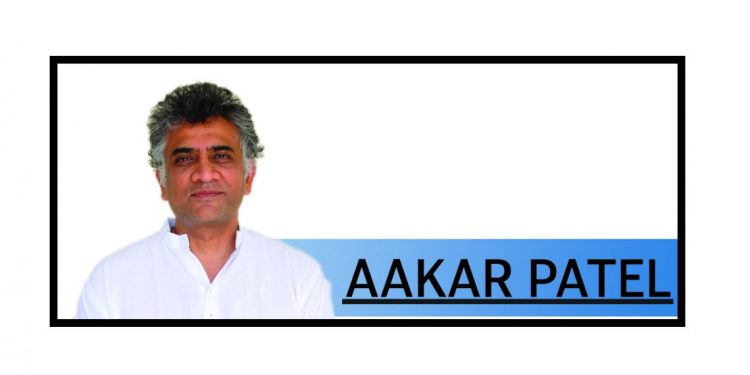Next year, on 17 September, the Prime Minister turns 75. Ten days after that, the Rashtriya Swayamsevak Sangh turns 100. During the Lok Sabha campaign, BJP president JP Nadda said the party did not need the RSS as it had in the past because it was now self-sufficient. This is an unusual statement because it assumes the two entities are totally separate. Are they?
The RSS is the only ideological fount for Hindutva. In the BJP, leaders come and go, policies come and go, and the RSS remains permanently in the background as the shareholder with a controlling stake. Indeed, the RSS formed the BJP to protect it. This is according to the official history of the BJP itself, which was published by the party in 2006 as a series of six volumes.
The founding of the Bharatiya Jana Sangh, the predecessor to the BJP came after an RSS rally in Delhi in December 1947 drew a large crowd and also attracted Hindu princes, businessmen and leaders of other Hindu organisations. This popularity was something that alarmed the Congress, especially Nehru, the BJP history says. The assassination of Gandhi on 30 January 1948 gave the Congress the opportunity to act. It decided to ban the RSS on 2 February, three days after Gandhi’s murder.
RSS chief Golwalkar had sensed his institution would get into trouble once the details of Gandhi’s assassination were out. He acted immediately. On the day of the killing, 30 January 1948, he sent telegrams to RSS branches suspending operations for thirteen days. The same day he also telegrammed Nehru, Patel and Gandhi’s son Devdas with a message of condolence: “Shocked at this cruel fatal attack and tragic loss of greatest personality.”
The next day Golwalkar again wrote to Nehru expressing his shock and referring to Godse as a “thoughtless perverted soul” who had “committed the heinous act of putting a sudden and ghastly end to the life of poojya Mahatmaji by the bullet.” He called the killing unpardonable and an act of treason. That day he again wrote to Patel: “My heart is wrung with extreme agony. It is difficult to find words to condemn the person who committed this crime…”
None of this helped. The government notification declaring the RSS unlawful said: “The professed aims and objects of the RSS are to promote the physical, intellectual and moral well-being of the Hindus and also to foster feelings of brotherhood, love and service amongst them … the Government have, however, noticed with regret that in practice members of the RSS have not adhered to their professed ideals.” “But now,” the government said, “they have been found circulating leaflets exhorting people to resort to terrorist methods to collect firearms … rendering it incumbent on the government to deal with the Sangh in its corporate capacity.”
Golwalkar was arrested on 3 February along with 20,000 swayamsevaks. The RSS says it was shocked that no political party and no political leader spoke up for it or stood in its defence. The ban remained for a little under a year and a half. It was lifted after the RSS was asked to produce a constitution. This was written up and submitted and the ban was lifted on 11 July 1949. Immediately following this, the RSS began debating entering politics in the pages of its house organ, The Organiser. It published articles from RSS workers including KR
Malkani who wrote that the Sangh “must take part in politics not only to protect itself” but also “to stop un-Bharatiya and anti-Bharatiya politics” and to “advance the cause of Bharatiyata through state machinery.” For these reasons, the Sangh must “continue as an ashram for the national cultural education of the entire citizenry, but it must develop a political wing for the more effective and early achievement of its ideals.”
Malkani said the new party “will be revivalist of ancient values as it will be futuristic in its targets” and it would be told “not to depend on foreign values, attitude and manners” and that “the principle of this re-organisation in Hindustan can only be Hindutva.”
RSS worker from the Arya Samaj Balraj Madhok wrote that the Sangh “must give the lead to the country in regard to the political and economic problems of the country” because this was “vital to the very existence of the Sangh itself.”
There was little or no opposition from inside the RSS to forming a political party. Three other things catalysed the formation of the Jana Sangh/BJP. Firstly, the resignation in April 1950 of SP Mookerjee, a former Hindu Mahasabha leader, from the Nehru Cabinet, claiming Muslim appeasement by Nehru. Secondly, the death of Sardar Patel in December 1950, a year before the first general election. Thirdly, the election the same year of PD Tandon as Congress president and his being forced to resign by Nehru. Tandon was a Hindu conservative who Nehru felt (according to the BJP history) was being supported by the RSS. All three things further convinced the RSS of the need to have a conservative Hindu element in popular politics.
On 21 October 1951, the Bharatiya Jana Sangh was launched, one year after our Prime Minister was born. Mookerjee was made its head and Golwalkar, always in the background, provided the nationwide framework for the party by deputing pracharaks to it, including Deendayal Upadhyaya from Uttar Pradesh. Today the six most senior ministers of India’s Union Cabinet according to the order of precedence are Swayamsevaks.
When the BJP is unsteady during minority governments, as it was under Vajpayee and as it seems to be today, the RSS can and will assert itself. It is the mothership to which the BJP must always return.
By Aakar Patel






































